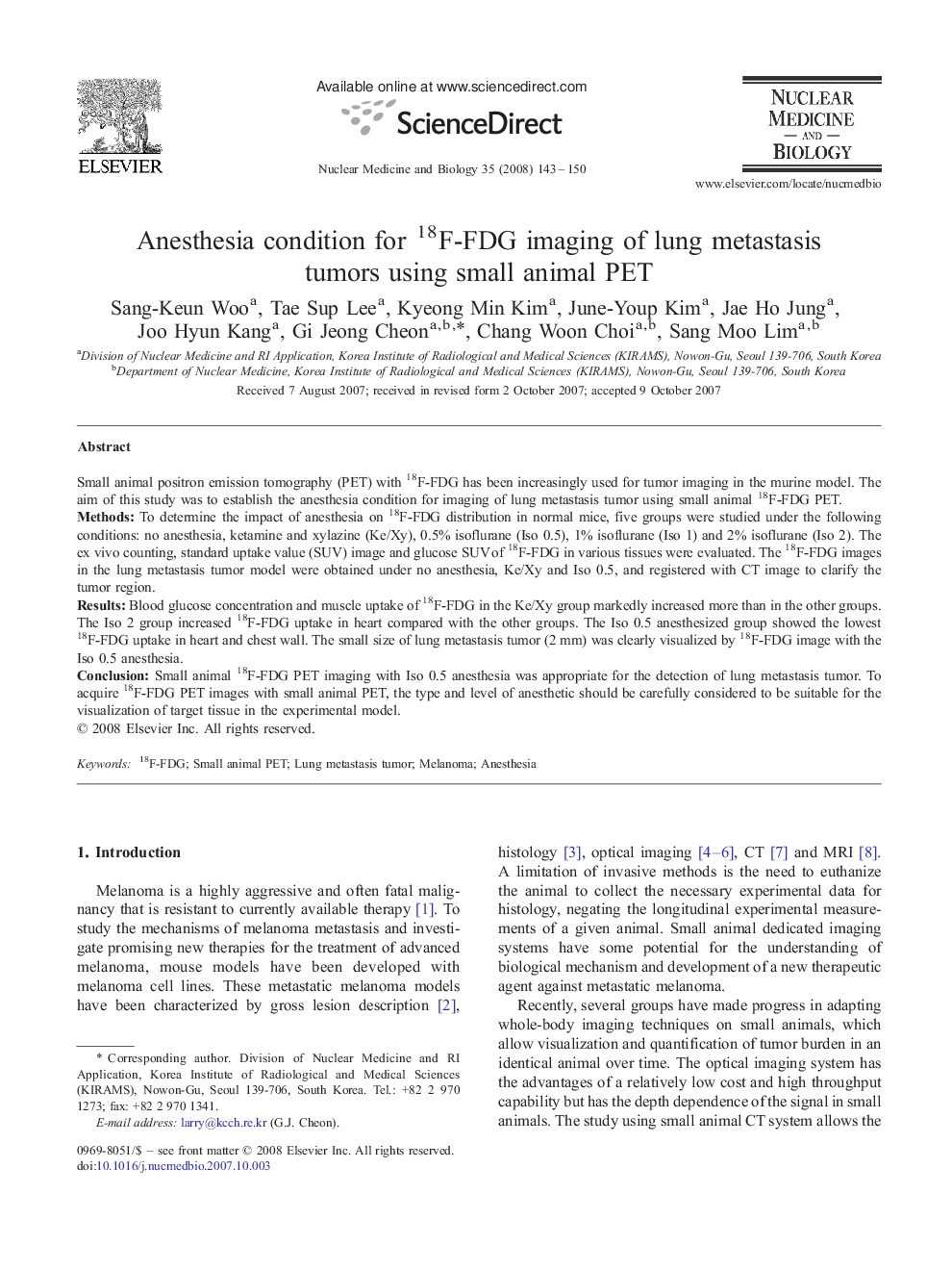| Article ID | Journal | Published Year | Pages | File Type |
|---|---|---|---|---|
| 2154480 | Nuclear Medicine and Biology | 2008 | 8 Pages |
Small animal positron emission tomography (PET) with 18F-FDG has been increasingly used for tumor imaging in the murine model. The aim of this study was to establish the anesthesia condition for imaging of lung metastasis tumor using small animal 18F-FDG PET.MethodsTo determine the impact of anesthesia on 18F-FDG distribution in normal mice, five groups were studied under the following conditions: no anesthesia, ketamine and xylazine (Ke/Xy), 0.5% isoflurane (Iso 0.5), 1% isoflurane (Iso 1) and 2% isoflurane (Iso 2). The ex vivo counting, standard uptake value (SUV) image and glucose SUV of 18F-FDG in various tissues were evaluated. The 18F-FDG images in the lung metastasis tumor model were obtained under no anesthesia, Ke/Xy and Iso 0.5, and registered with CT image to clarify the tumor region.ResultsBlood glucose concentration and muscle uptake of 18F-FDG in the Ke/Xy group markedly increased more than in the other groups. The Iso 2 group increased 18F-FDG uptake in heart compared with the other groups. The Iso 0.5 anesthesized group showed the lowest 18F-FDG uptake in heart and chest wall. The small size of lung metastasis tumor (2 mm) was clearly visualized by 18F-FDG image with the Iso 0.5 anesthesia.ConclusionSmall animal 18F-FDG PET imaging with Iso 0.5 anesthesia was appropriate for the detection of lung metastasis tumor. To acquire 18F-FDG PET images with small animal PET, the type and level of anesthetic should be carefully considered to be suitable for the visualization of target tissue in the experimental model.
